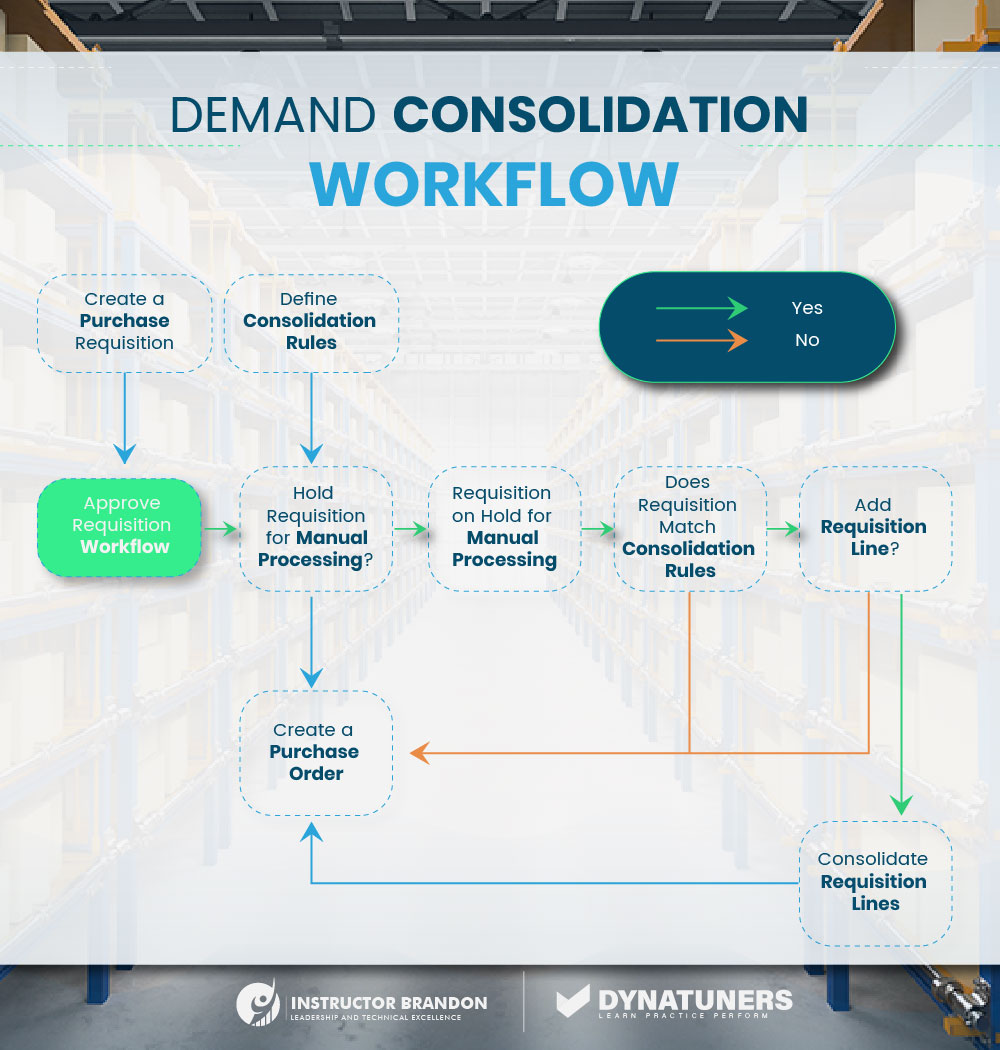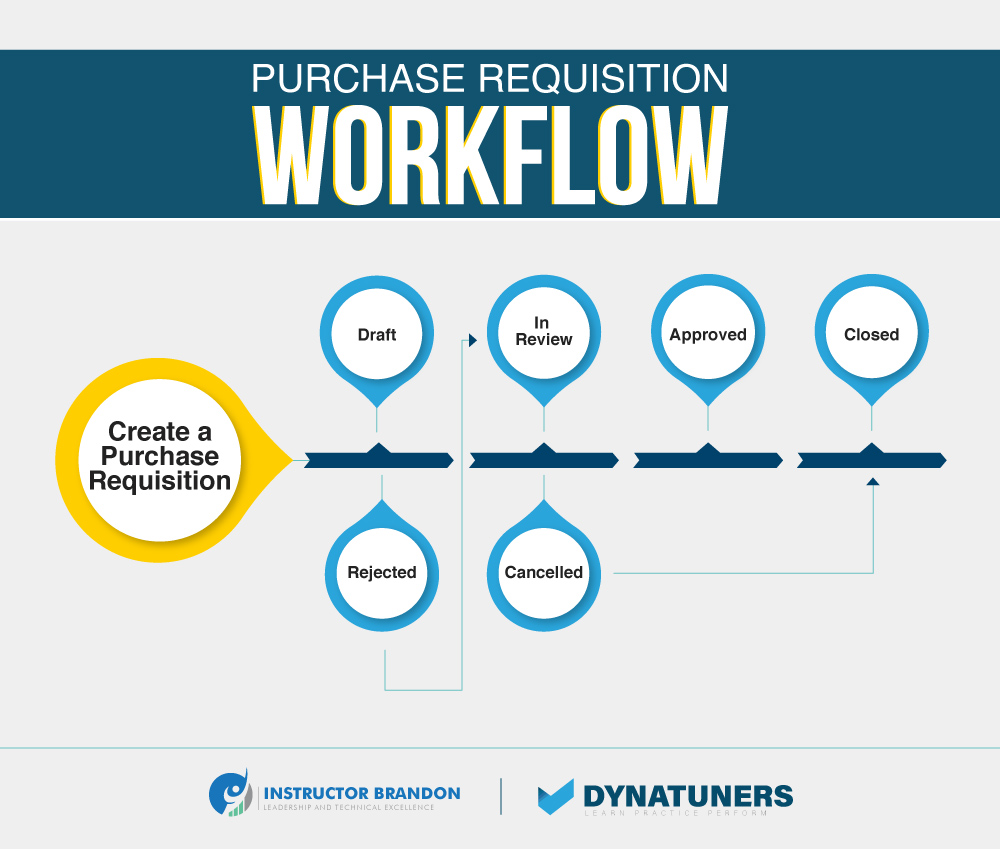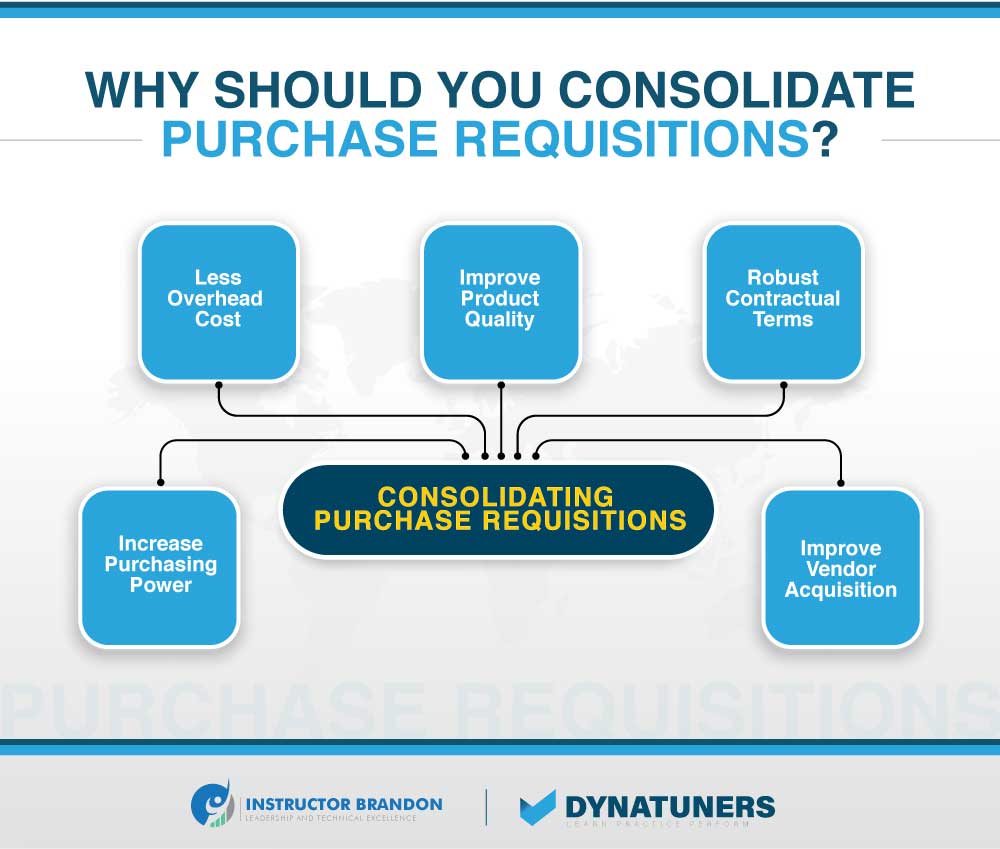Dynamics 365 Tutorials, Dynamics Operations Training, Microsoft Dynamics 365 Developer (F&S) Training Series, Supply Chain and Logistics Management
Tips & Tricks to Consolidate Purchase Requisitions and Avoid Overheads with D365
Tricks to Consolidate Purchase Requisitions in Dynamics 365
Consolidation | Procurement | Dynamics 365 SCM
Purchase requisitions or purchase requisition forms are documents that are used when employees need to make a purchase or order request. When you are dealing with multiple purchases for different departments, work your fingers to the bone to get the best prices. Yet, a problem often occurs where you might have to bear various shipping and handling costs with several overheads. Our functional team at Dynatuners felt your pain for paying extra charges and decided to post something about it.
When this need for a solution was put amongst our analysts, they offered a couple of explanations for it, and one way through is consolidating your purchase requisition.
Procurement consolidation is a rather old strategy than many of us thought it would be. It was first identified as a major procurement trend in the 90s’.
Thankfully, D365 Supply Chain procurement and sources module is addressed with demand consolidation and purchase requisition lines. It simplifies and consolidates purchasing of items via several gates of processes that include to:
- Create purchase requisitions
- Approve and Review requisition Workflow
- Create Consolidation Opportunity
- Create purchase orders for consolidated requisition lines

An eye on Creating Purchase Requisitions, Step one for Consolidation
To the casual eye, the definition of Procurement is straightforward: getting the deals done and buying services and goods through a competitive bidding market. But we know how it is pretty different when you are managing a multinational. Some days contain tons of negotiations for billion items and continuous technical processes to meet the purchase demands accurately.
Concisely, Procurement has its nose to the grind every day. Here is our post to know more about speeding up procurement invoicing.
It can be hard to know where to begin while managing purchase requisitions with billions of items on top of countless processes. To understand our way through, let’s make a scenario following the workflow process for demand consolidation:
A Human Resources assistant needs to buy office equipment for the department. As an HR assistant cannot access the purchase order, they can use purchase requisitions to make a request and receive permission to buy the equipment thus required.
For that the employee has to create a requisition for the purchases in Dynamics 365 Supply Chain Management using Procurement and sourcing and trails the following steps and goes to:
Step 1
Procurement and sourcing > Purchase requisitions > Purchase requisitions prepared by me.
Step 2
Select New.
Step 3
Enter the relevant information and click OK.
Step 4
In the Reason field, choose an option.
Step 5
In the details field enter a more descriptive justification for the requisition.
NOTE: To be eligible for consolidating the purchase requisition line, user must review the approved requisition line and hold it for manual processing.
SUMMARY
Employees use purchase requisitions to tell their company that they need to order products or services on the firm’s behalf. These documents are the first step in the purchasing process, and if the procurement department approves the purchase, they will lead to a purchase order.
Review and Approve Requisition Lines, Step two for Consolidation
After creating a purchase requisition, employee’s appeal gets reviewed according to product details and demand consolidation rules. Finally, it gets approved by the manager; maybe the employee had some legit assets for the work.
The purchase requisition approval hierarchy from Dynamics 365 SCM brings the auditable expense workflow without the need to save and upload email attachments.
In configuring the approved purchase requisition, the user can add an approval step for those who don’t reside in a company’s typical managerial or departmental hierarchy.
Through customization, companies can also enhance their systems to support the acquisition of multiple interim approvals. Here is a cycle through which a purchase requisition goes through:

An employee’s requisition of purchases goes through pre-defined policy rules to convert purchase requisitions to purchase orders. For example, a petition to buy a current or fixed asset can have the following demand consolidation rules:
- Determine if the purchase requires a separate purchase order for the requisition line or not
- Users can also deploy a price tolerance rule to route approved purchase requisitions back through the review process when the price of an item increases
- Pick manually processed approved purchase requisitions, and forward those purchase requisitions to be eligible for demand consolidation
- Check if requisition fails validation due to a vendor error or a price tolerance error
- Transfer prices and discounts directly from the purchase requisition or use trade agreements to compute distribution cost and value
The status of a Purchase Requisition before Approval depends on the progress of the purchase requisition. Therefore, it can have different positions.
User can see the requisition status in the Purchase requisitions form on the header. Her processed purchase requisitions can have the following positions until they are approved:
| Positions & Descriptions for Purchase Requisition | |
| Requisition Position | Description |
| Draft | The purchase requisition is either prepared but not yet submitted to Workflow, or it is recalled from Workflow |
| In Review | The purchase requisition has been submitted, resubmitted, or delegated for approval |
| Rejected | The purchase order is turned down |
| Approved | Workflow has approved the purchase requisition |
| Canceled | Although the purchase requisition line was approved, it was canceled since it was no longer necessary |
| Closed | Depending on the requisition’s purpose, the buy requisition line was approved, and documentation was generated |
Adding line and product to requisition
If the requisition gets approved through the Workflow, it can move on further for Consolidation. However, the petition doesn’t get approved or does not meet the purchasing policy rule criteria for manual processing and demand consolidation.
In that case, employee might have to add more lines to her requisition or remove some by implementing the following steps:
Step 1
Select Add line. If you already know the product number or know that you are requesting a product, not in the product catalog, you can add the line directly with Add line.
Step 2
Select the row you just created. The requester is the employee who has requested the requisition.
Step 3
In the Item number field, type a value. The items available for you to choose are limited by the category access policy and the procurement catalog for the buying legal entity.
Step 4
In the Quantity field, enter a number.
To add products to the requisition, select “Add Product”. Then, enter the first name of the category that you are looking for in the Find procurement node field.
You can also use filter to list your products in the category. After the filtering the results, select “Add to lines”. Then enter your required quantity and select “Add unlisted product to line”.
After that, enter the values for product name and unit field and select OK.
Enter your required quantity and a unit price. Then open drop down list of Vendor accounts field and select one. Enter your value for external item number, and select OK.
SUMMARY
Purchase requisitions are forwarded to the department manager or buying officer, once they’ve been completed, informing them of the department’s needs. Next, the manager examines the purchase request to ensure a legitimate request within the department’s financial accounts limit. The department can also see if it is coming from a pre-approved vendor or not.
Most businesses require more than one budgetary control mechanism, especially if a product or service is expensive. The purchase requisition is denied and returned to the requester for revisions if the information is missing, erroneous, or insufficient.
Create Consolidation Opportunity, Step three for Consolidation
A consolidation opportunity is a grouping of requisition lines you initiated above. These consolidation opportunities further assist purchasing department in negotiating the best price with vendors.
Read more about shipment consolidation.
On the Purchase requisition consolidation page, you may choose which purchase requisition lines to consolidate.
Here at this step, you can also modify the lines on this page. This also includes the addition or removal of existing lines.
You can initiate purchase order for the consolidated purchase requisition lines once you add requisition lines to a consolidation opportunity and make any necessary revisions.
Step 1
Click Procurement and sourcing > Common > Purchase requisitions, click Release approved purchase requisitions to create an opportunity.
Step 2
On the Action Pane, on the Release tab, click Consolidation opportunities.
Step 3
In the Purchase requisition consolidation form, click New.
In the Create a new consolidation opportunity form, follow these steps:
Step 4
In the Name field, enter a name for the consolidation opportunity.
Step 5
In the Currency field, enter the currency that you want to use for the consolidation lines.
Step 6
In the Targeted end date field, enter the date that you expect to finish generating purchase orders for all purchase requisition lines in the consolidation opportunity.
Step 7
Click Add to opportunity. In the Add to consolidation opportunity form, select the purchase requisition lines that you want to add to the consolidation opportunity.

Create a Purchase order from Consolidated Opportunity
You can use this procedure to create a purchase order for all the lines that are selected in the consolidation opportunity. When you create a purchase order for the consolidation lines, the purchase requisition lines are removed from the Release approved purchase requisitions form.
Note: You must close the consolidation opportunity before you can create a purchase order for the consolidation lines.
Step1
Click Procurement and sourcing > Common > Purchase requisitions > Release approved purchase requisitions.
Step 2
On the Action Pane, on the Release tab, click Consolidation opportunities.
Step 3
Select the opportunity in the consolidation form and click Create a Purchase order.
Once you are done, you will see a message saying that the system has created purchase orders for the selected consolidation opportunity. If you see an error for any purchase requisition lines, the message also indicates which lines contain errors. The status of the processed purchase requisition lines is changed to Closed, and the lines are removed from the Release approved purchase requisitions page.
SUMMARY
Creating a purchase order from requisition lines can allow you purchasing department to perform better a project accounting and select the best deal from the vendor. Initiating purchases with requisitions will also aid your cost centers to organize the money and perform better at operations.
Closing Lines: Purchase Requisition
Realistically, there are no negative impacts to purchase order consolidation— only benefits to your procurement team, supply chain team, and your company. It will not only benefit you in monetary terms but will also increase the efficiency of your employees.
Moreover, it can also minimize the space within your production facilities to necessary material replenishment. Plus, purchase order consolidation provides your company with a contractual safety shield that allows you to make adjustments in the middle of billing periods.
At Instructor Brandon | Dynatuners, we always seek innovative methods to improve your competitiveness and suit your Microsoft Dynamics 365 requirements. Our offerings are founded on defined procedures, industry experience, and product understanding. If you’re interested to consult with our technical solutions experts on how we may help you to consolidate purchase requisitions or reduce overheads through several other ways using Dynamics 365, we are here to tune your workspace in the right way so it may fit your requirements, to get more information on it Contact Us.
[sc_fs_multi_faq headline-0=”h2″ question-0=”What is a requisition line? ” answer-0=”A Requisition Line is used to view objects storing information about purchase requisitions. It manages the items purchased, their quantity, unit of measure, price, and deliver-to location information. ” image-0=”” headline-1=”h2″ question-1=”What is demand consolidation? ” answer-1=”A consolidation opportunity is a pack of purchase requisition lines that are grouped so that the purchasing agent can negotiate the best deal with vendors. ” image-1=”” headline-2=”h2″ question-2=”What is a requisition cycle? ” answer-2=”Someone in your organization makes a request for products or services, which starts the requisition life cycle. After that, the requester must fill out the requisition and send it to the people in charge of approving the accounting distributions and amounts. ” image-2=”” count=”3″ html=”true” css_class=””]
 8904
8904 

